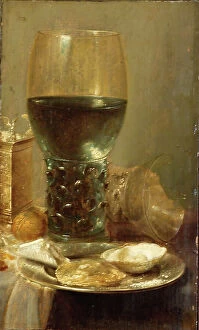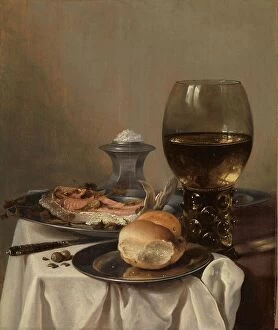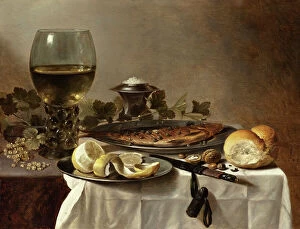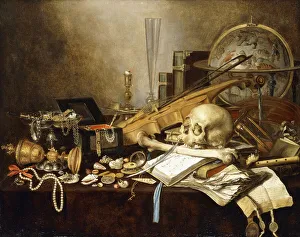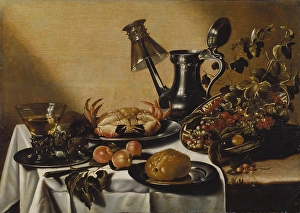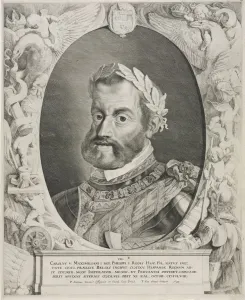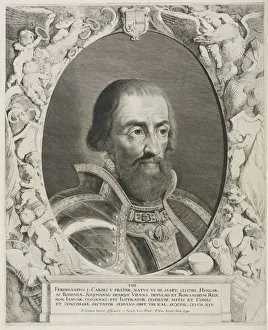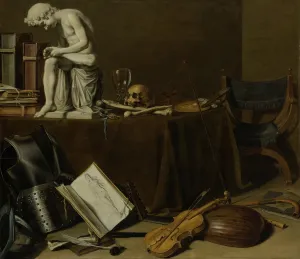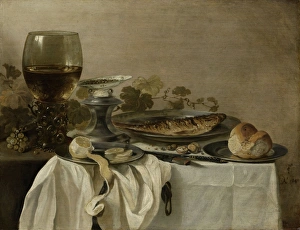Pieter Claesz Collection
Pieter Claesz, a renowned Dutch still-life painter of the 17th century, captured the essence of vanitas in his masterpieces
All Professionally Made to Order for Quick Shipping
Pieter Claesz, a renowned Dutch still-life painter of the 17th century, captured the essence of vanitas in his masterpieces. One such artwork is "A Vanitas Still Life of Musical Instruments and Manuscripts, " where he skillfully arranged various objects to symbolize the transience of life. In this composition, Claesz juxtaposes delicate musical instruments with aged manuscripts, reminding us that even art forms fade away over time. Another notable piece by Claesz is "Still Life with Peacock Pie. " Painted in 1627, it showcases his meticulous attention to detail as he portrays an opulent feast complete with a sumptuous peacock pie. This extravagant display serves as a reminder that material wealth and indulgence are fleeting pleasures. In "Still Life with a Skull and a Writing Quill" from 1628, Claesz delves into the theme of mortality once again. The skull acts as a memento mori, urging viewers to contemplate their own mortality while surrounded by symbols of creativity and intellect. Moving forward to 1647, we encounter "Breakfast with Ham, " where Claesz presents an everyday scene infused with symbolism. The ham represents sustenance and nourishment but also alludes to decay and impermanence. Through this work, Claesz invites us to reflect on the transient nature of our earthly existence. Throughout his career, Pieter Claesz demonstrated remarkable skill in capturing light and texture in his still lifes. His works often feature meticulously rendered fruits or seafood arrangements like those seen in "Pieter Claesz Life Crab Fruit Meal Piece Fruits. " These paintings not only showcase his technical prowess but also serve as reminders of life's abundance and its eventual decay. While primarily known for his still lifes, it also ventured into portraiture. Two notable examples include portraits he created depicting Emperor Charles V (1644) and Emperor Ferdinand I (both painted by Pieter van Sompel).

